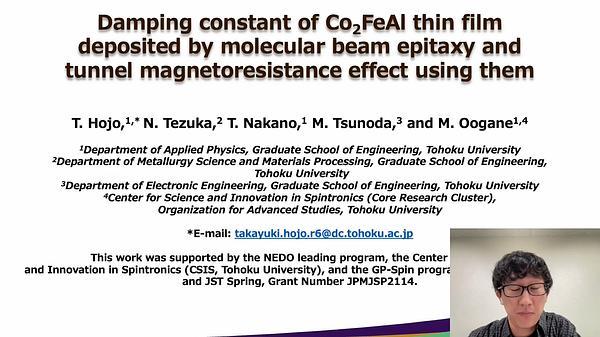Would you like to see your presentation here, made available to a global audience of researchers?
Add your own presentation or have us affordably record your next conference.
Investigations on rare-earth intermetallics are at the forefront as they exhibit novel physical phenomena and can be used for spintronics, magnetic refrigeration, and memory applications. R2T3X5 series (R-rare-earth element, T-Transition element, and X-p-block element) is one of these well-studied systems with novel physical phenomena1,2, whose application perspectives must be further explored. Hence, in this work, magnetic, magnetoresistance(MR), and magnetocaloric(MCE) properties of Tb2Co3Ge5 from the same series have been investigated to gain a better understanding of its physical features and potential applications3. The compound has been prepared by arc-melting technique followed by 15 days of annealing at 1023K. The compound crystallizes in Lu2Co3Si5 structure (SG - I12/c1) and exhibits successive antiferromagnetic transitions at T=31.5 K, 19.4 K, and 11 K, respectively. The antiferromagnetic character is confirmed by the modified Curie-Wiess behavior in the inverse magnetic susceptibility (B=10 kOe) with Curie-Weiss temperature (θP)= -8.2 K. Further studies of heat capacity and electrical resistivity show that the crystal electric field effect has an effect and that, at low temperatures, there is a magnon gap of 17.6 K, which is a sign of the complex antiferromagnetic ground state. As the magnetic field(B) increases, the antiferromagnetic ground state shows a metamagnetic transition around the critical magnetic field, Bc=40 kOe, which has an impact on both MR and MCE. As shown in Fig.1, the MR properties reveal a crossover from positive to negative around Bc, due to the presence of metamagnetic transition. At higher fields, B=90 kOe, the negative MR reaches a maximum of 51% at 12 K. Similarly, variation of B above Bc alters the inverse MCE to conventional type with enhancement in MCE properties (See Fig.2). The crossover in the MR and MCE is more suitable for the magnetic refrigeration application4 as it can switch between cooling and heating cycles as B varies. Acknowledgments: ITMS: 313011D232 ERDF; and also by VEGA1/0705/20, 1/0404/21.
